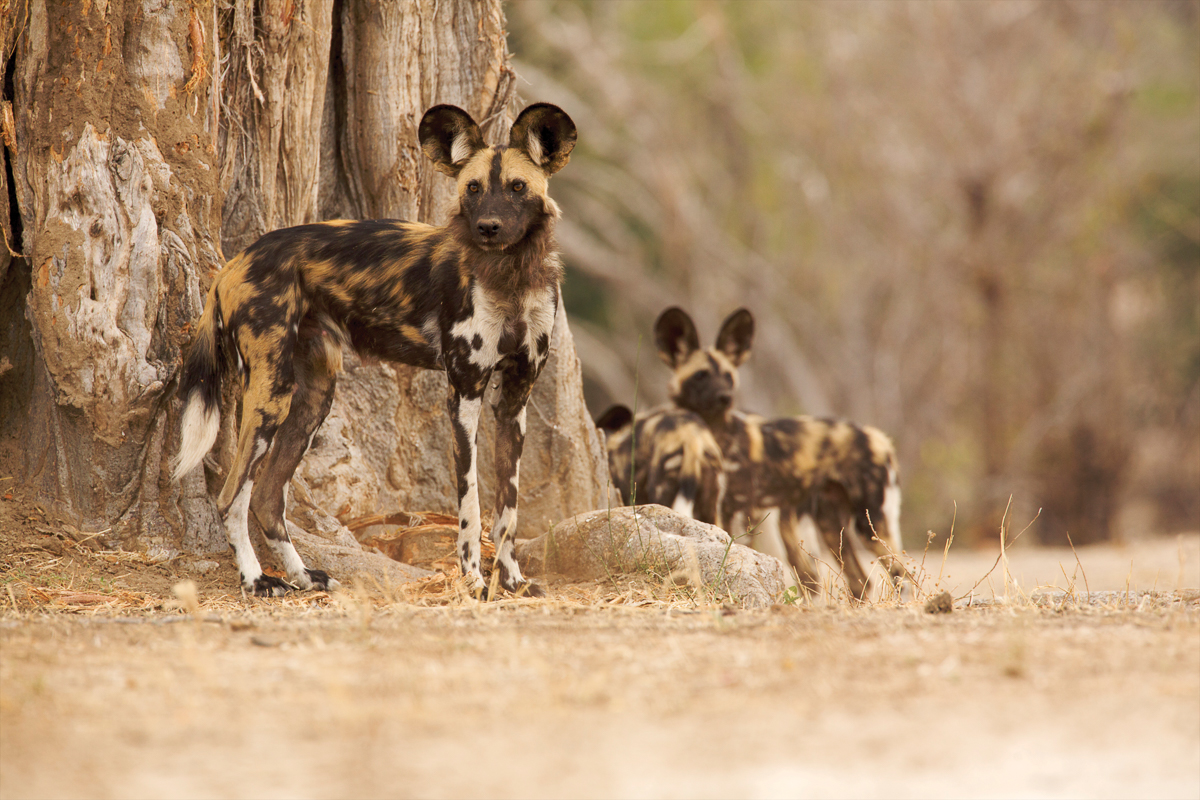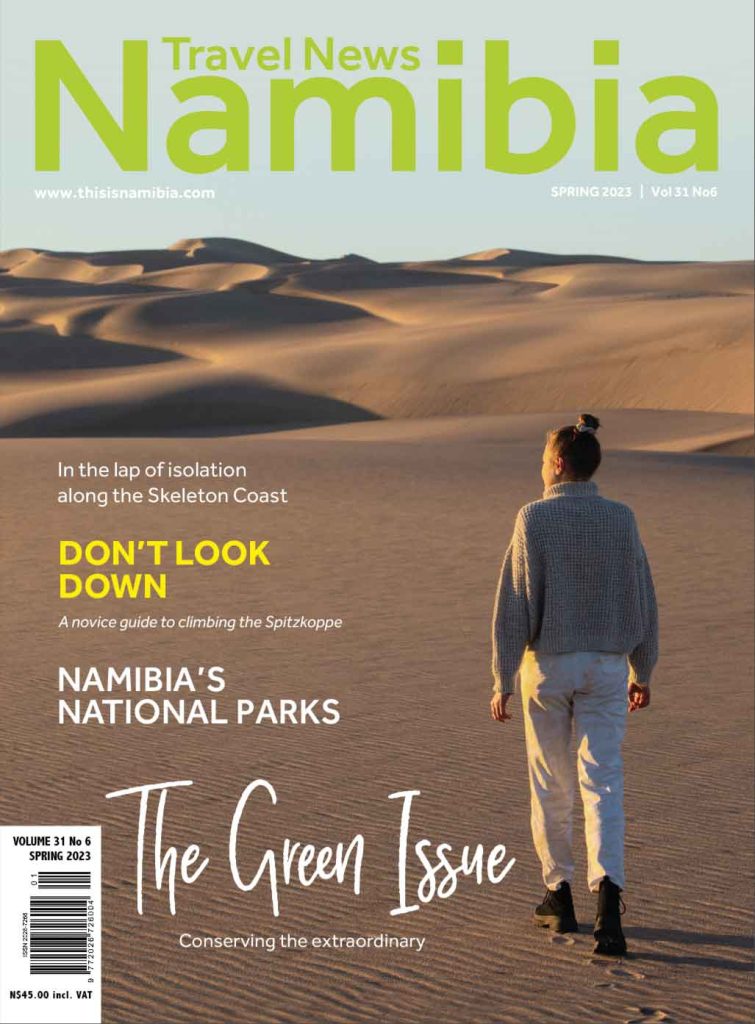

Namibia's Most Endangered Species
Explore the Precarious Existence of Namibia’s Most Endangered Species and the Ongoing Efforts to Preserve Their Future.
Text Elzanne McCulloch
From the Spring 2023 issue
Its numerous national parks and private reserves are a testament to Namibia’s commitment to protecting its abundant and diverse wildlife, which makes it a premier tourist destination for nature enthusiasts. Etosha National Park, home to 114 mammal species, is undoubtedly the most famous of these protected areas. Among Namibia’s natural treasures are 220 mammal species, eight of them near-endemic. According to the IUCN Red list, the three truly endemic mammal species are the Namib round-eared sengi (or elephant shrew), Etendeka round-eared sengi and the dune hairy-footed gerbil.
Namibia’s eponymous Namib Desert is renowned for its remarkable dune-dwelling creatures, such as the numerous species of endemic reptiles – 43 in total – that thrive in this harsh environment. Moreover, Namibia boasts a vibrant avian population of 647 species, making it a haven for birdwatchers. Namibia has only one truly endemic bird – the Dune Lark.
However, despite its rich biodiversity, Namibia faces the challenging reality of hosting endangered species. Several creatures on the brink of extinction are found in Namibia. Among them are the African wild dog, black rhino and African elephant.
African elephant, black and white rhino are the species most threatened by poaching. Fortunately, conservation efforts have been pivotal in their preservation, and many reserves have successfully reintroduced these majestic creatures. Namibia’s populations have seen encouraging resuscitation.
Namibia also boasts the largest population of cheetahs in southern Africa outside of national parks, offering hope for the survival of this incredible predator. Furthermore, the country sustains numerous antelope species, ranging from the massive eland to the diminutive Damara dik-dik. The striking gemsbok, adorned with symmetrical horns and distinctive black and white markings, proudly graces Namibia’s coat of arms.
In addition to these charismatic creatures, Namibia shelters a wealth of smaller mammals, including the elusive mongoose, jackal, antbear and honey badger. They are rarely seen due to their solitary and nocturnal nature.
Namibia’s parks and reserves consist of a wide range of environments, from lush woodlands to the barren coastal strip with its monumental sand dunes. Etosha National Park, the great white place, offers a typical southern savannah experience with a variety of plains game and predators. Waterberg Plateau National Park, on the other hand, supports rare animals like the tsessebe, roan and sable antelope.
Protecting its endangered species is crucial for the preservation of Namibia’s rich biodiversity and maintaining ecological balance. The Namibian government, along with non-government organisations and conservancies, has taken impressive steps to safeguard the country’s unique wildlife heritage. These efforts contribute not only to conservation but also to the well-being of local communities through sustainable ecotourism initiatives.
Namibia’s commitment to protecting its wildlife reflects the nation’s dedication to responsible tourism and showcases the true beauty of this vast, diverse and enchanting country. As travellers venture into the heart of Namibia, they actively contribute and become part of the efforts to safeguard these endangered species and the long-term survival of Namibia’s precious wildlife, ensuring that future generations will continue to marvel at the wonders of this extraordinary land.
Spot them during your visit:
Here are some of Namibia’s most endangered or vulnerable mammals (there are 57 endangered animal species in total; data from IUCN Red List):
- Black rhino (Critically Endangered)
- African wild dog (Endangered)
- African elephant (Endangered)
- European rabbit (Endangered)
- Sei whale (Endangered)
- Blue whale (Endangered)
- Cheetah (Vulnerable)
- Leopard (Vulnerable)
- Fin whale (Vulnerable)
- Lion (Vulnerable)
- Giraffe (Vulnerable)
- Black-footed cat (Vulnerable)
- Hippopotamus (Vulnerable)
- Sperm whale (Vulnerable)
- Temminck’s pangolin (Vulnerable)
- Mountain zebra (Vulnerable)






